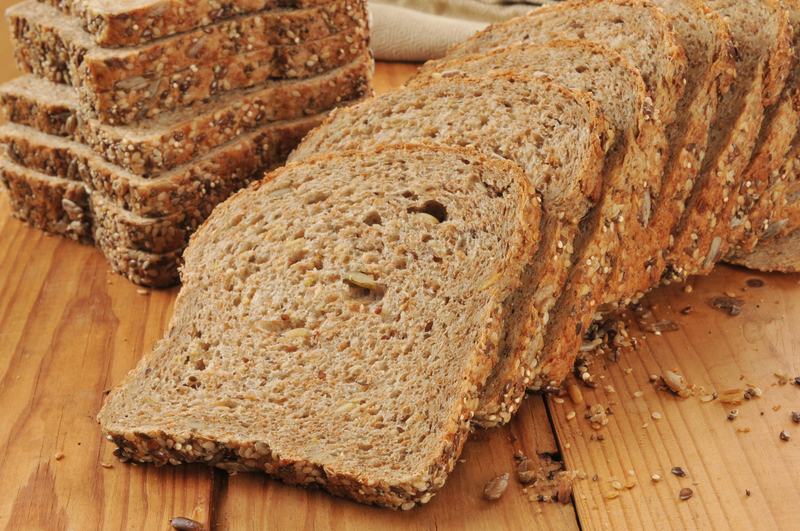How to Clean Ovens Effectively
Posted on 15/09/2024
Cleaning an oven might seem like a daunting task, but with a well-structured approach and the right tools, it can be managed efficiently and effectively. This guide will walk you through the comprehensive steps and tips on how to clean ovens effectively, ensuring your oven remains in top working condition and maintains high hygiene standards.
Preparation: Gathering the Right Tools and Materials
Before diving into the cleaning process, it's crucial to gather all the necessary tools and supplies. Having everything at hand will make the process seamless and more efficient.
- Rubber gloves to protect your hands from harsh chemicals and grime.
- Safety goggles to shield your eyes from potential splashes.
- Plastic or drop cloth to protect your floor from drips and spills.
- Baking soda - a natural and effective cleaner.
- Vinegar - another natural cleaner that works well with baking soda.
- Spray bottle for easy application of cleaning solutions.
- Non-abrasive scrubbing brush or sponge for scrubbing grime without damaging surfaces.
- Microfiber cloths for wiping down surfaces.
- A bucket of warm water for rinsing.
- Commercial oven cleaner (optional) for particularly tough jobs.

Step-by-Step Process: Manual Cleaning with Baking Soda Paste
Using natural cleaners like baking soda and vinegar is an eco-friendly approach to oven cleaning. Here's a detailed process for using these household staples:
Step 1: Remove and Clean Oven Racks
Remove the oven racks and place them in a sink filled with hot, soapy water. Allow them to soak while you move on to the next steps. After soaking for about 20 minutes, use a scrubbing brush or sponge to remove any remaining grime. Rinse thoroughly and let them dry.
Step 2: Prepare the Baking Soda Paste
Mix half a cup of baking soda with a few tablespoons of water to create a thick, spreadable paste. Adjust the consistency by adding more water if necessary.
Step 3: Apply the Baking Soda Paste
Wearing your rubber gloves, spread the baking soda paste all over the interior surfaces of the oven, avoiding the heating elements. Focus on areas with heavy buildup. The paste will likely turn brown as it picks up grease and grime.
Step 4: Let It Sit
Allow the paste to sit for at least 12 hours or overnight. This period gives the baking soda ample time to break down tough stains and baked-on debris.
Step 5: Wipe Down the Oven
After the waiting period, use a damp microfiber cloth to wipe away the baking soda paste. You may need to use a plastic spatula to scrape off particularly stubborn spots. Rinse the cloth frequently in the bucket of warm water.
Step 6: Spritz with Vinegar
Fill a spray bottle with vinegar and spritz the oven's interior. The vinegar will react with any remaining baking soda, creating a foam. This reaction helps to further lift and dissolve grime. Wipe again with a damp cloth until the oven is clean and free of residue.
Alternative Method: Using a Commercial Oven Cleaner
For those with heavily soiled ovens or limited time, a commercial oven cleaner can be a more efficient solution. Here's how to use it safely and effectively:
Step 1: Remove Oven Racks
Once again, start by removing the oven racks. Following the manufacturer's instructions, spray them with the cleaner, and let them sit in a well-ventilated area.
Step 2: Apply the Cleaner
Wearing rubber gloves and safety goggles, spray the interior of the oven with the commercial cleaner, avoiding the heating elements. Ensure you cover all areas with grime and grease buildup.
Step 3: Wait
Let the cleaner sit for the duration recommended by the manufacturer, usually around 20 to 30 minutes. This wait time allows the chemicals to break down the tough stains and baked-on debris.
Step 4: Wipe Down
After waiting, use a damp cloth or sponge to wipe away the cleaner. You may need to rinse and wring out the cloth multiple times to remove all the cleaner and debris. Follow up with a clean, damp cloth to ensure no residue is left behind.
Step 5: Clean the Oven Racks
Rinse off the cleaner from the oven racks thoroughly and allow them to dry before placing them back into the oven.

Maintaining a Clean Oven: Tips and Best Practices
To keep your oven in good condition and reduce the need for intensive cleaning sessions, follow these maintenance tips:
Tip 1: Wipe Spills Immediately
Address spills as soon as they happen to prevent them from hardening and becoming more difficult to clean. After the oven has cooled, wipe up any spills with a damp cloth.
Tip 2: Use an Oven Liner
Invest in an oven liner to place at the bottom of your oven. These reusable, heat-resistant mats catch food drippings and spills, making cleanup much easier.
Tip 3: Regular Wipe Downs
Get into the habit of wiping down your oven's interior with a damp cloth regularly, even if it doesn't look particularly dirty. This practice prevents the gradual buildup of grease and grime.
Tip 4: Avoid Aluminum Foil
Avoid lining your oven with aluminum foil as it can trap heat, damage the oven's interior, and interfere with cooking. Instead, use a proper oven liner or baking trays.
Tip 5: Self-Cleaning Feature
If your oven has a self-cleaning option, use it periodically. This feature uses high temperatures to burn off food and grease. Ensure you follow your manufacturer's instructions carefully when using this feature.
Conclusion: Keep Your Oven Sparkling Clean
Cleaning your oven does not have to be a daunting task. By following the outlined steps and adopting regular maintenance habits, you can keep your oven in pristine condition. Whether you choose the natural route with baking soda and vinegar or opt for a commercial cleaner, the key to effective oven cleaning is consistency and attention to detail. With these tips, your oven will remain clean, efficient, and ready for all your cooking endeavors.








